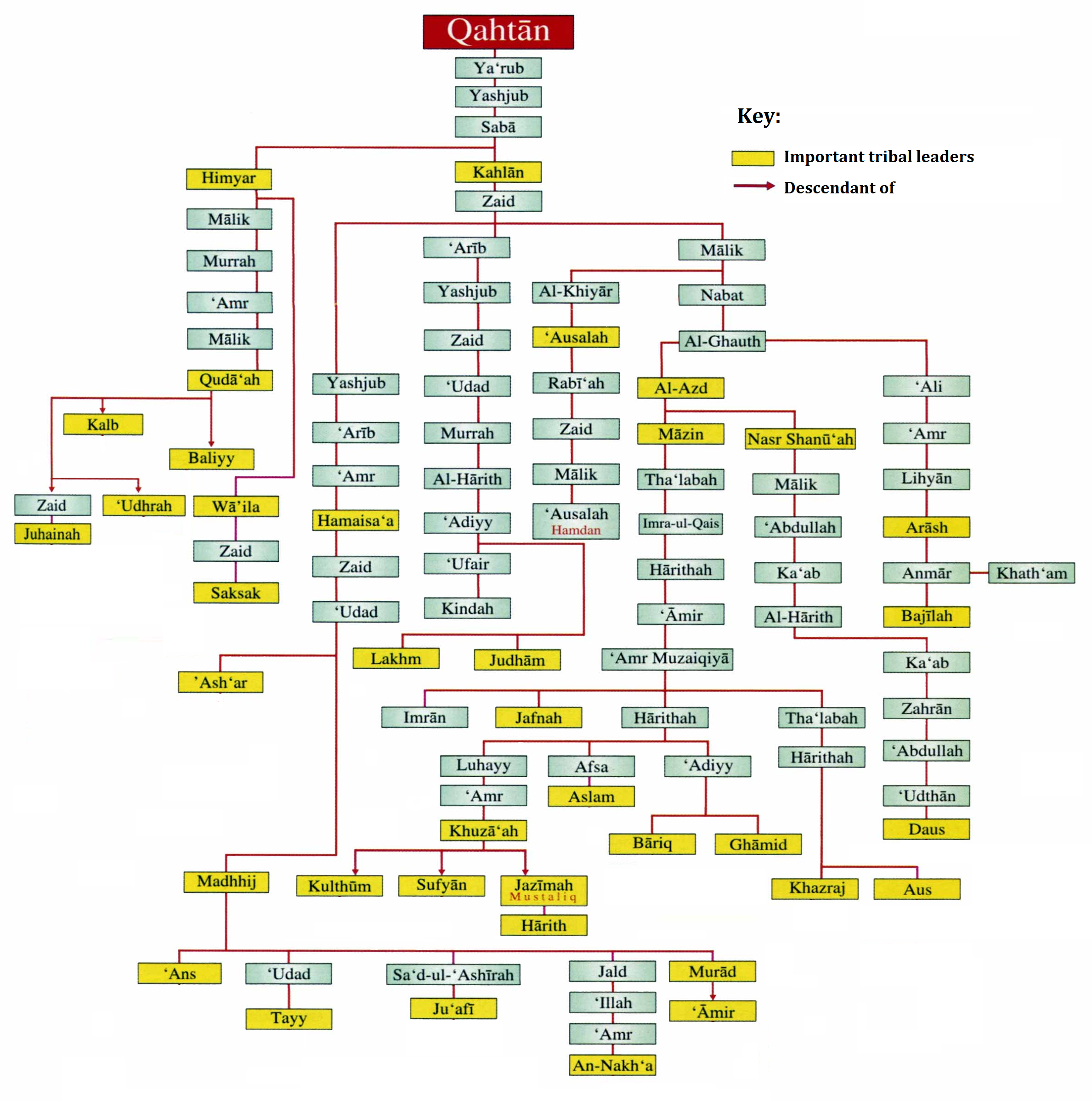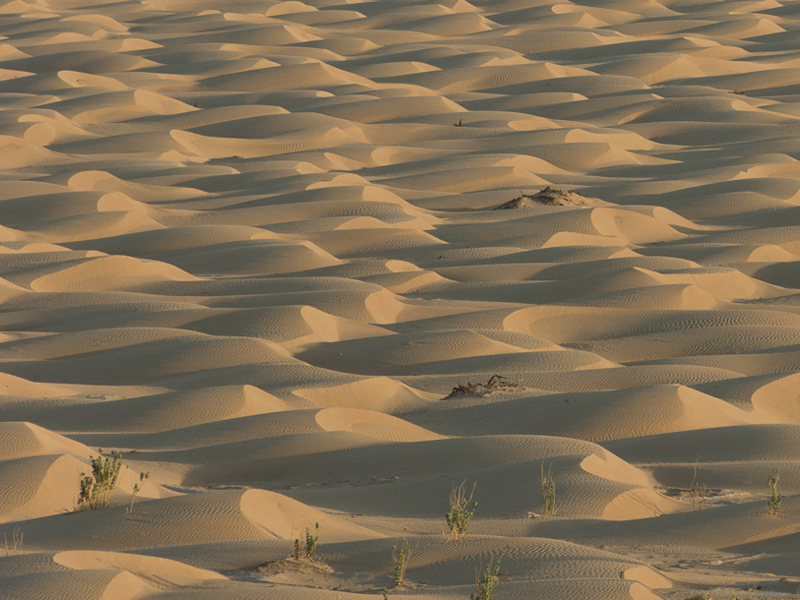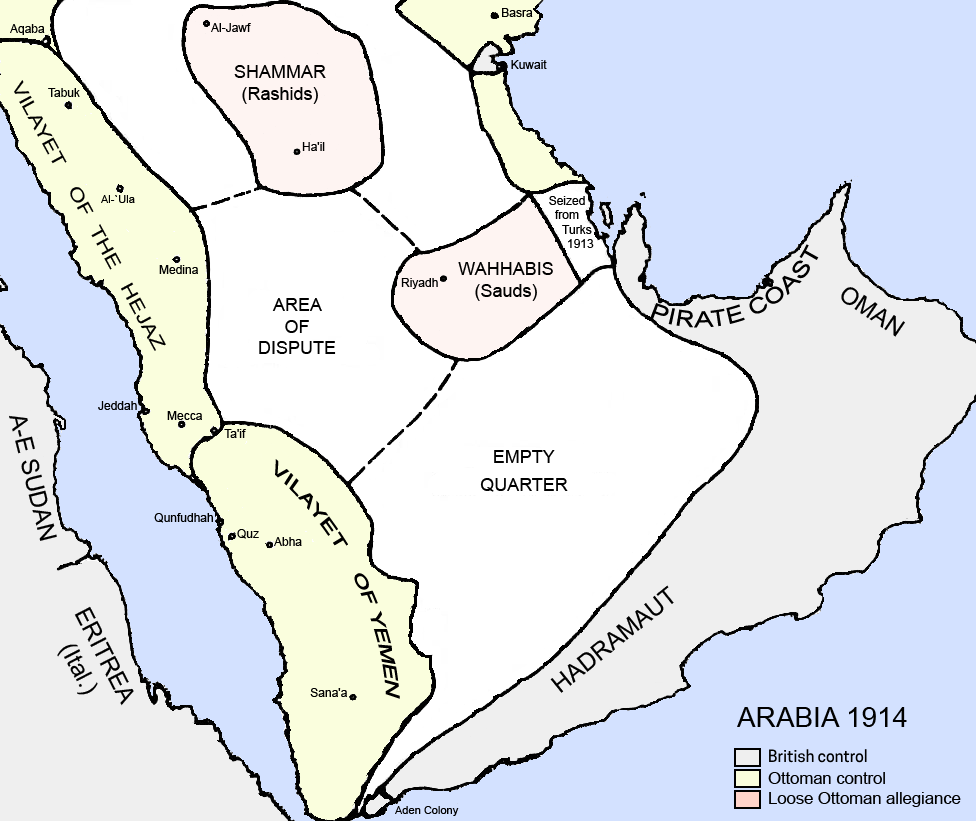|
Mahra Sultanate
The Mahra Sultanate, known in its later years as the Mahra State of Qishn and Socotra ( ar, الدولة المهرية للبر وسقطرى ') or sometimes the Mahra Sultanate of Ghayda and Socotra ( ar, سلطنة المهرة في الغيضة وسقطرى ') was a sultanate that included the historical region of Mahra and the Guardafui Channel island of Socotra in what is now eastern Yemen. It was ruled by the Banu Afrar dynasty for most of its history. In 1886, the Sultanate became a British protectorate and later joined the Aden Protectorate. The Sultanate was abolished in 1967 upon the founding of the People's Republic of South Yemen and is now part of the Republic of Yemen. The Sultanate was inhabited by the Mahri people who spoke the Mahri language, a modern South Arabian language. The Mehri share, with their regional neighbours on the island of Socotra and in Dhofar in Oman, blood lineage ties in Somalia with the Mehri in Somalia (Arab Salah) tribe, cultural trad ... [...More Info...] [...Related Items...] OR: [Wikipedia] [Google] [Baidu] |
Sin Escudo
In a religious context, sin is a transgression against divine law. Each culture has its own interpretation of what it means to commit a sin. While sins are generally considered actions, any thought, word, or act considered immoral, selfish, shameful, harmful, or alienating might be termed "sinful". Etymology From Middle English sinne, synne, sunne, zen, from Old English synn (“sin”), from Proto-West Germanic *sunnju, from Proto-Germanic *sunjō (“truth, excuse”) and *sundī, *sundijō (“sin”), from Proto-Indo-European *h₁s-ónt-ih₂, from *h₁sónts ("being, true", implying a verdict of "truly guilty" against an accusation or charge), from *h₁es- (“to be”); compare Old English sōþ ("true"; see sooth). Doublet of suttee. Bahá'í Baháʼís consider humans to be naturally good, fundamentally spiritual beings. Human beings were created because of God's immeasurable love for us. However, the Baháʼí teachings compare the human heart to a mirror, wh ... [...More Info...] [...Related Items...] OR: [Wikipedia] [Google] [Baidu] |
Oman
Oman ( ; ar, عُمَان ' ), officially the Sultanate of Oman ( ar, سلْطنةُ عُمان ), is an Arabian country located in southwestern Asia. It is situated on the southeastern coast of the Arabian Peninsula, and spans the mouth of the Persian Gulf. Oman shares land borders with Saudi Arabia, the United Arab Emirates, and Yemen, while sharing maritime borders with Iran and Pakistan. The coast is formed by the Arabian Sea on the southeast, and the Gulf of Oman on the northeast. The Madha and Musandam exclaves are surrounded by the United Arab Emirates on their land borders, with the Strait of Hormuz (which it shares with Iran) and the Gulf of Oman forming Musandam's coastal boundaries. Muscat is the nation's capital and largest city. From the 17th century, the Omani Sultanate was an empire, vying with the Portuguese and British empires for influence in the Persian Gulf and Indian Ocean. At its peak in the 19th century, Omani influence and control extended across ... [...More Info...] [...Related Items...] OR: [Wikipedia] [Google] [Baidu] |
Hud (prophet)
Hud (; ar, هُوْد, Hūd) was a prophet of ancient Arabia mentioned in the Quran. The eleventh chapter of the Quran, '' Hud'', is named after him, though the narrative of Hud comprises only a small portion of the chapter. Historical context Hud has sometimes been identified with Eber, an ancestor of the Ishmaelites and the Israelites who is mentioned in the Old Testament. He is said to have been a subject of a ''mulk'' ( ar, مُلك, kingdom) named after its founder, 'Ad, a fourth-generation descendant of Noah (his father being Uz, the son of Aram, who was the son of Shem, who in turn was a son of Noah): The other tribes claimed to be present at this time in Arabia, were the Thamud, Jurhum, Tasam, Jadis, Amim, Midian, Amalek Imlaq, Jasim, Qahtan, Banu Yaqtan and others. The Quran gives the location of ʿĀd as being ''Al-Aḥqāf'' ( ar, ٱلْأَحقَاف, "The Sandy Plains", or "The Wind-curved Sand-hills"). It is believed to have been in South Arabia, ... [...More Info...] [...Related Items...] OR: [Wikipedia] [Google] [Baidu] |
Qahtanite
The terms Qahtanite and Qahtani ( ar, قَحْطَانِي; transliterated: Qaḥṭānī) refer to Arabs who originate from South Arabia. The term "Qahtan" is mentioned in multiple ancient Arabian inscriptions found in Yemen. Arab traditions believe that they are the original Arabs. Traditional Arab genealogy According to Arab tradition, the Qahtanites are from South Arabia, unlike the Adnanites who are from the north of Arabia descended from Ishmael through Adnan. "The 'arabized or arabizing Arabs', on the contrary, are believed to be the descendants of Ishmael through Adnan, but in this case the genealogy does not match the Biblical line exactly. The label 'arabized' is due to the belief that Ishmael spoke Hebrew until he got to Mecca, where he married a Yemeni woman and learnt Arabic. Both genealogical lines go back to Sem, son of Noah, but only Adnanites can claim Abraham as their ascendant, and the lineage of Mohammed, the Seal of Prophets (khatim al-anbiya'), can theref ... [...More Info...] [...Related Items...] OR: [Wikipedia] [Google] [Baidu] |
Ya'rub
Ya'rub ( ar, يعرب, also spelled ''Yarob'',''Ya'rob'', ''Yarrob'', ''Yarab'' or ''Yaarub'') is an ancient Arabic personal name. He is the grandson of Abir being the son of Qahtan and the ancestor of the Himyarite and Sabaean kings of Yemen.van Donzel, 1994, p. 483. A similar account places Ya'rub as Qahtan's grandson (Ya'rub bin Yashjub bin Qahtan) and holds that he is the forefather of ''al-'Arab al-'Ariba'' ("the arab arabs" or "pure arabs"), who are generally identified with the Qahtanites and its two main tribes, the Himyar and the Kahlan.Prentiss, 2003, p. 172. Some legendary accounts relate that Ya'rub was the first to speak Arabic and that the language was named for him.Crosby, 2007, pp. 74-75.Sperl, 1989, p. 209. Shams-i Qais Razi, writing in the 12-13th century CE, traced the origins of Arabic poetry to Ya'rub and he is also credited with having invented the Kufic script.Sperl et al., 1996, p. 138.Thackston, 2001, p. 7. Ancestor of kings Ya'rub was said to be one of ... [...More Info...] [...Related Items...] OR: [Wikipedia] [Google] [Baidu] |
Islam
Islam (; ar, ۘالِإسلَام, , ) is an Abrahamic religions, Abrahamic Monotheism#Islam, monotheistic religion centred primarily around the Quran, a religious text considered by Muslims to be the direct word of God in Islam, God (or ''Allah'') as it was revealed to Muhammad, the Muhammad in Islam, main and final Islamic prophet.Peters, F. E. 2009. "Allāh." In , edited by J. L. Esposito. Oxford: Oxford University Press. . (See alsoquick reference) "[T]he Muslims' understanding of Allāh is based...on the Qurʿān's public witness. Allāh is Unique, the Creator, Sovereign, and Judge of mankind. It is Allāh who directs the universe through his direct action on nature and who has guided human history through his prophets, Abraham, with whom he made his covenant, Moses/Moosa, Jesus/Eesa, and Muḥammad, through all of whom he founded his chosen communities, the 'Peoples of the Book.'" It is the Major religious groups, world's second-largest religion behind Christianity, w ... [...More Info...] [...Related Items...] OR: [Wikipedia] [Google] [Baidu] |
Thamud
The Thamud ( ar, ثَمُوْد, translit=Ṯamūd) were an ancient Arabian tribe or tribal confederation that occupied the northwestern Arabian peninsula between the late-eighth century BCE, when they are attested in Assyrian sources, and the fifth century CE, when they served as Roman auxiliaries. The Kingdom of Thamud was the first existing kingdom on the Arabian peninsula, according to Assyrian and Roman sources. Arabian tradition holds that the Thamud kingdom was destroyed by God. It had no written law, but the tribal leader played the role of ruler. The Thamud are mentioned in contemporary Mesopotamian, Classical, and Arabian sources, including in inscriptions in a temple erected in the 160s for the god ʾlhʾ, by the Thamud themselves. It is possible that multiple unrelated groups took on the name of Thamud; they probably spoke Old Arabic. The Thamud are not specially connected to the Thamudic scripts, an aggregate term for understudied writing systems of Ancient Arabi ... [...More Info...] [...Related Items...] OR: [Wikipedia] [Google] [Baidu] |
ʿĀd
ʿĀd ( ar, عَادٌ, ') is an ancient tribe mentioned frequently in the Qurʾān. The tribe's members, referred to as ʿĀdites, formed a prosperous nation until they were destroyed in a violent storm. According to Islamic tradition, the storm came after they had rejected the teachings of a Monotheistic prophet named '' Hud''. ʿĀd is regarded as one of the original Arab tribes, the "lost Arabs". Historicity, etymology, and location In the second edition of the ''Encyclopaedia of Islam'', F. Buhl commented that "whether there really existed, and where, a nation called ''ʿĀd'', is still an unanswered question",F. Buhl, "ʿĀd", in ''Encyclopaedia of Islam'', ed. by Paul Bearman and others, 2nd edn, 12 vols (Leiden: Brill, 1960–2005), , . though in the third edition, Andrew Rippin simply labelled them, less sceptically, "an ancient Arab tribe".Andrew Rippin, "ʿĀd", in ''Encyclopaedia of Islam'', ed by Kate Fleet and others, 3rd edn (Leiden: Brill, 2007–), , . In rel ... [...More Info...] [...Related Items...] OR: [Wikipedia] [Google] [Baidu] |
Hadhramaut Governorate
Hadhramaut or Hadramawt or Hadramout ( ar, حضرموت ''Ḥaḍramawt'') is a governorate of Yemen. Lying within the large historical region of Hadhramaut, it is the country's largest governorate. The capital of Hadhramut is the city of Mukalla. Other cities in Hadhramaut include the historical towns of Shibam, Sena, Seiyun, Tarim, and Ash Shihr. The Socotra Archipelago was transferred from the Adan Governorate to the Hadhramaut Governorate in 2004. It was subsequently separated to form the newly created Soqatra Governorate in December 2013. Districts Hadhramaut Governorate is divided into the following 28 districts, after the creation of Socotra Governorate on December 2013. These districts are further divided into sub-districts, and then further subdivided into villages: * Ad Dis District * Adh Dhlia'ah District * Al Abr District * Mukalla District * Mukalla City District * Al Qaf District * Al Qatn District * Amd District * Ar Raydah Wa Qusayar District ... [...More Info...] [...Related Items...] OR: [Wikipedia] [Google] [Baidu] |
Aden Governorate
Aden ( ar, عدن ' Yemeni: ) is a city, and since 2015, the temporary capital of Yemen, near the eastern approach to the Red Sea (the Gulf of Aden), some east of the strait Bab-el-Mandeb. Its population is approximately 800,000 people. Aden's natural harbour lies in the crater of a dormant volcano, which now forms a peninsula joined to the mainland by a low isthmus. This harbour, Front Bay, was first used by the ancient Kingdom of Awsan between the 7th to 5th centuries BC. The modern harbour is on the other side of the peninsula. Aden gets its name from the Gulf of Aden. Aden consists of a number of distinct sub-centres: Crater, the original port city; Ma'alla, the modern port; Tawahi, known as "Steamer Point" in the colonial period; and the resorts of Gold Mohur. Khormaksar, on the isthmus that connects Aden proper with the mainland, includes the city's diplomatic missions, the main offices of Aden University, and Aden International Airport (the former British Roya ... [...More Info...] [...Related Items...] OR: [Wikipedia] [Google] [Baidu] |
Al Mahra Governorate
Al Mahrah ( ar, ٱلْمَهْرَة '), or simply Mahra, is a governorate (''muhafazah'') of Yemen in the southern part of the Arabian Peninsula. Situated in the area of the former Mahra Sultanate, its capital is Al Ghaydah, and it has international borders with Saudi Arabia and Oman. Languages and people A sizeable part of the Mahrah population does not speak Arabic as their primary language. Non-Arabic-speakers primarily speak Mehri or Mahri, which is a Modern South Arabian language, similar to the adjacent Dhofar Governorate of Oman. The people that speak Mahri call themselves 'Mahris', and are presumed to be descendants of the ancient people of 'Ad. Geography The geography of Al-Mahrah is similar to that of neighboring Dhofar in Oman. Rigid peaks rising to around , and the Empty Quarter Desert lies to the north. Along its coast near the border with Oman, Al Mahrah is affected by the seasonal monsoon, or Khareef. The mountains become water-soaked and the atmosphere bec ... [...More Info...] [...Related Items...] OR: [Wikipedia] [Google] [Baidu] |
Monsoon
A monsoon () is traditionally a seasonal reversing wind accompanied by corresponding changes in precipitation but is now used to describe seasonal changes in atmospheric circulation and precipitation associated with annual latitudinal oscillation of the Intertropical Convergence Zone (ITCZ) between its limits to the north and south of the equator. Usually, the term monsoon is used to refer to the rainy phase of a seasonally changing pattern, although technically there is also a dry phase. The term is also sometimes used to describe locally heavy but short-term rains. The major monsoon systems of the world consist of the West African, Asia–Australian, the North American, and South American monsoons. The term was first used in English in British India and neighboring countries to refer to the big seasonal winds blowing from the Bay of Bengal and Arabian Sea in the southwest bringing heavy rainfall to the area. Etymology The etymology of the word monsoon is not ... [...More Info...] [...Related Items...] OR: [Wikipedia] [Google] [Baidu] |



.jpg)
.jpg)



